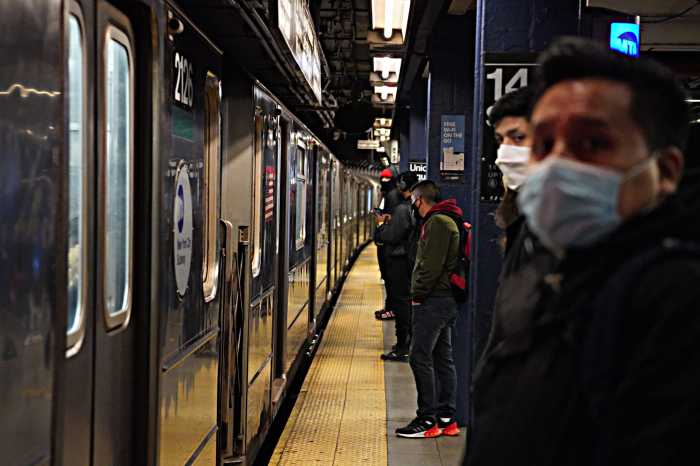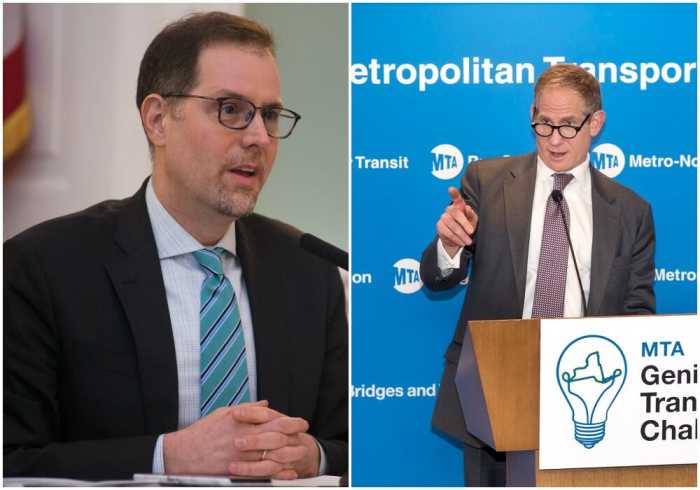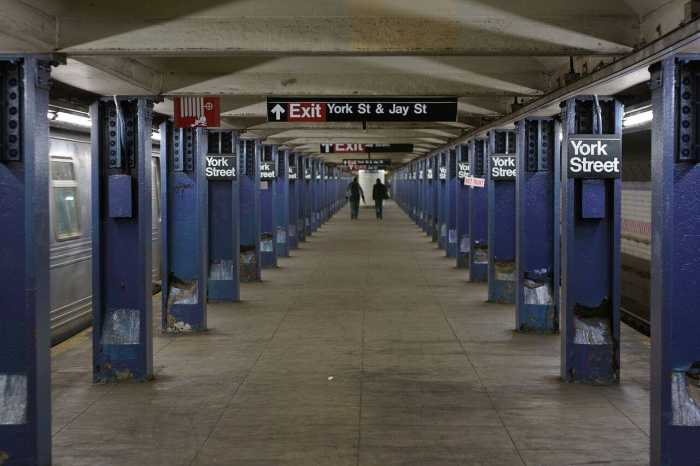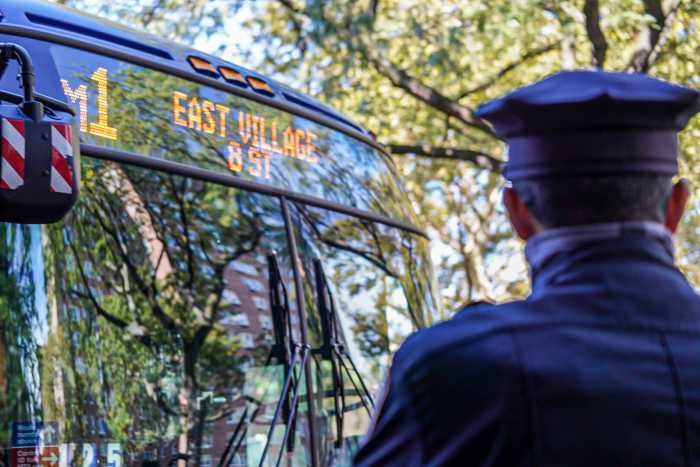MTA officials said Thursday that they’re planning to roll out a slate of new measures to prevent track trespassers in New York City’s subway system amid a recent rise in rail intrusions and after the deadly shoving of rider Michelle Go in front of a train in Times Square last month.
The initiatives — including the platform barriers at three stations announced yesterday, along with lighting, sensors, and cameras — aim to keep people out of harm’s way, and out of the path of the subways.
“It’s not just the violent assault we saw last month, which was a horrific version of this problem, but also everyday incidents of people retrieving cell phones or trying to cross between platforms,” said MTA Chairperson and CEO Janno Lieber in a statement Thursday. “It’s a huge risk to safety and the day-to-day operation of the system.”
After saying in January that there were unique local “complexities” to setting up the barriers in the Big Apple’s underground, Lieber revealed on Wednesday that the MTA will pilot installing protective screen doors on the L train at Third Avenue, the 7 line at Times Square, and the E train at Sutphin Boulevard near the JFK AirTrain in Queens by 2024 for a price tag of more than $100 million.
The agency chose those as a testing grounds because the stops have different layouts and because they’re in different parts of the city.
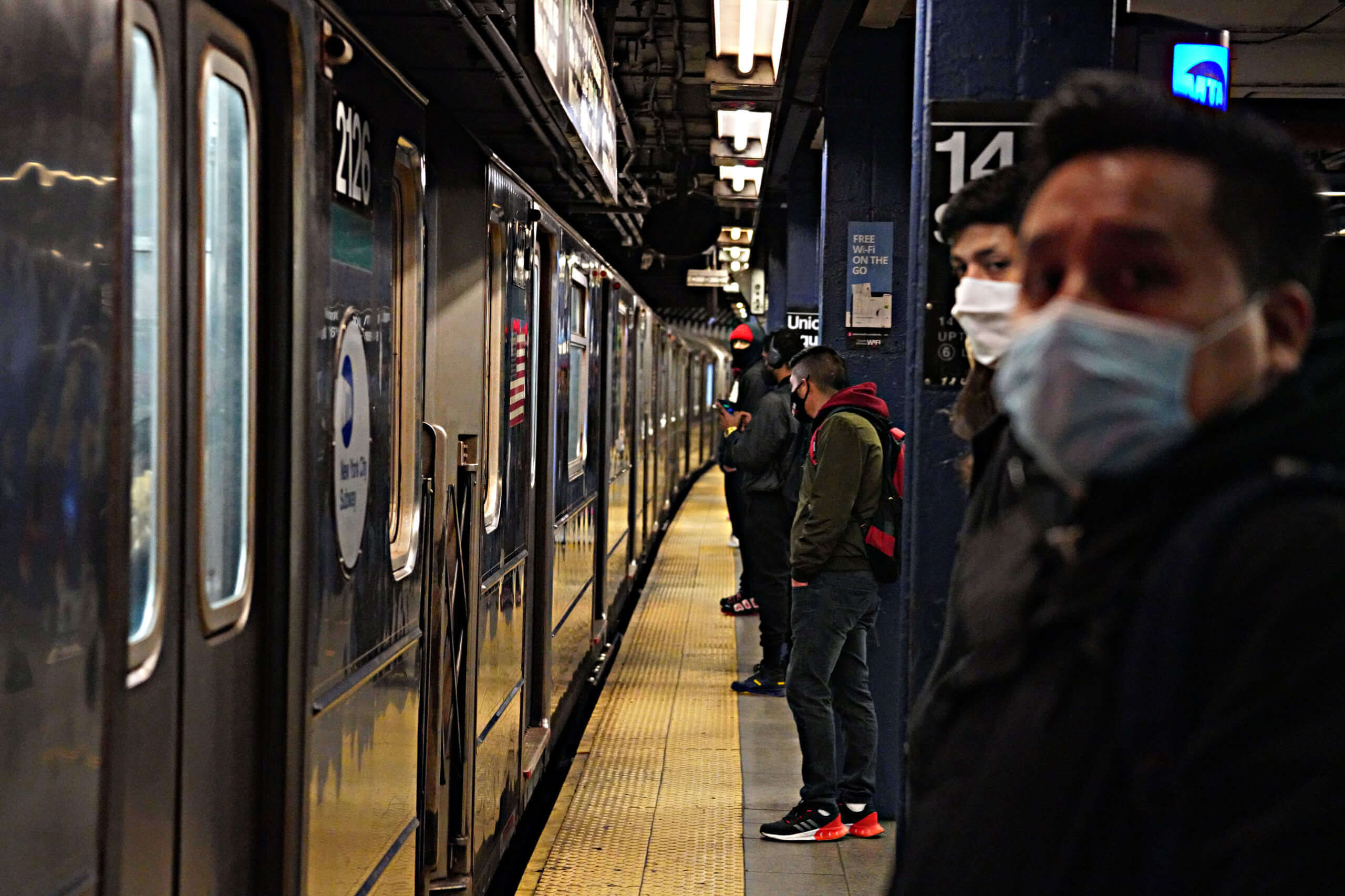
MTA’s Construction and Development head Jamie Torres-Springer, who led a task force to investigate track trespassing since December and briefed the agency’s board Thursday, noted that the idea of installing shorter fencing, floated by some, could lead to gnarly accidents.
“While there are good reasons to think that these improvements would be helpful, our safety experts are also concerned that they can backfire by causing injuries if someone gets caught in a door and dragged down the platform, which is a not infrequent occurrence in our system,” he said.
There were 1,267 cases of reported track intrusions in 2021, up 19% compared to 2019 with 1,062 instances. Last year, 200 (16%) cases caused collisions and 68 of those were fatal, Torres Springer said.
A snapshot of 160 incidents in January revealed that only four were due to an assault or shoving, and about three-quarters were voluntary, including people crossing tracks or suffering from mental illness.
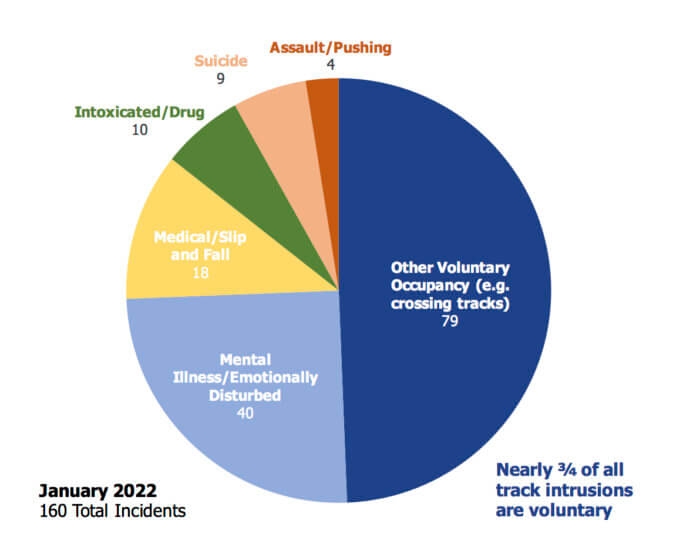
Transit workers found a whopping 29 homeless encampments in subway tunnels, along with 89 at stations, which regularly cause trespasses, according to Torres-Springer.
“Encampments in tunnels directly lead to track trespassing incidents,” Torres-Springer said during the Feb. 24 meeting.
Suicides are a regular cause of trespasses as well, and the MTA wants to install more blue lighting on platforms, which studies have shown to have a calming effect on people and reduce the number of people taking their own lives on the rails.
“Interventions like this have a nudge effect that can reduce the incidents of individuals committing suicides in transit systems, which we know often are impulsive acts,” so Torres-Springer. “These are not generally premeditated, so any little action or any little intervention can help.”
The Long Island Rail Road already has such lights at 20 stations and is in the middle of installing it at seven more, but transit officials want to now expand it to the subways and the Metro-North Railroad.
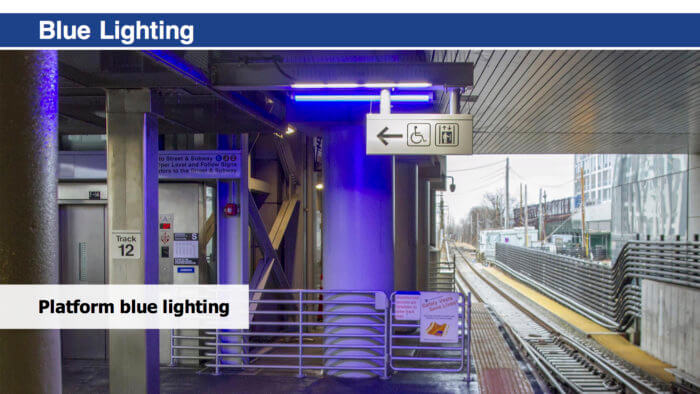
A 2013 study of blue LED lighting on railways in Japan found that the lamps led to an 84% drop in the number of suicides there, and another piece of research from 2017 found that blue lighting speeds up relaxation for people who are stressed out, compared to white lighting.
So-called track intrusion detection systems will be piloted by the MTA to issue alerts whenever a person or object enters the track, and the Authority will add existing laser sensors to 11 additional stations.
The task force also recommended installing cameras at the front of trains and using artificial intelligence and analytics to monitor CCTV footage from stations.
“[That] will allow us to remotely monitor footage in real time to flag potentially dangerous behavior or conditions for interventions,” Torres-Springer said.




